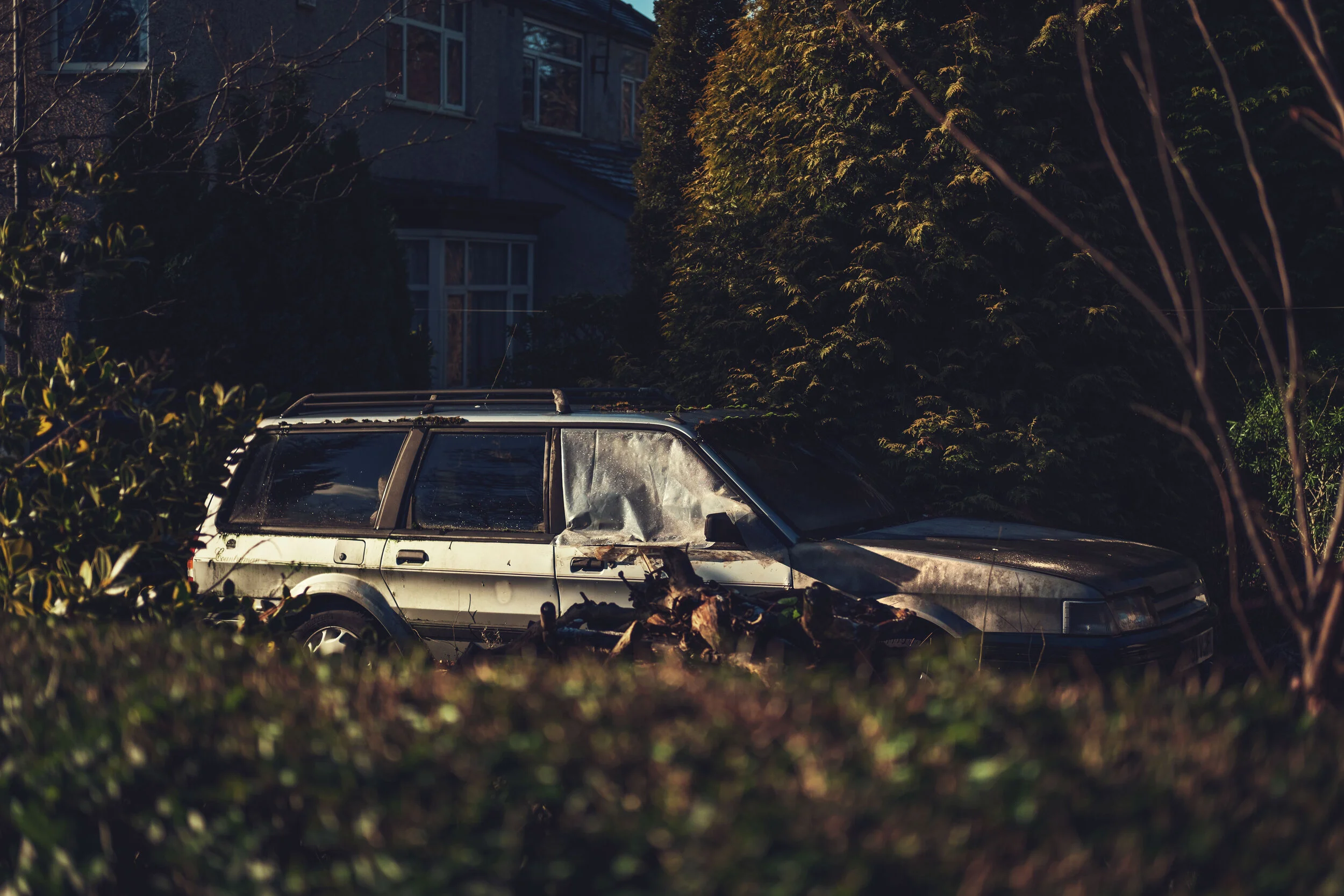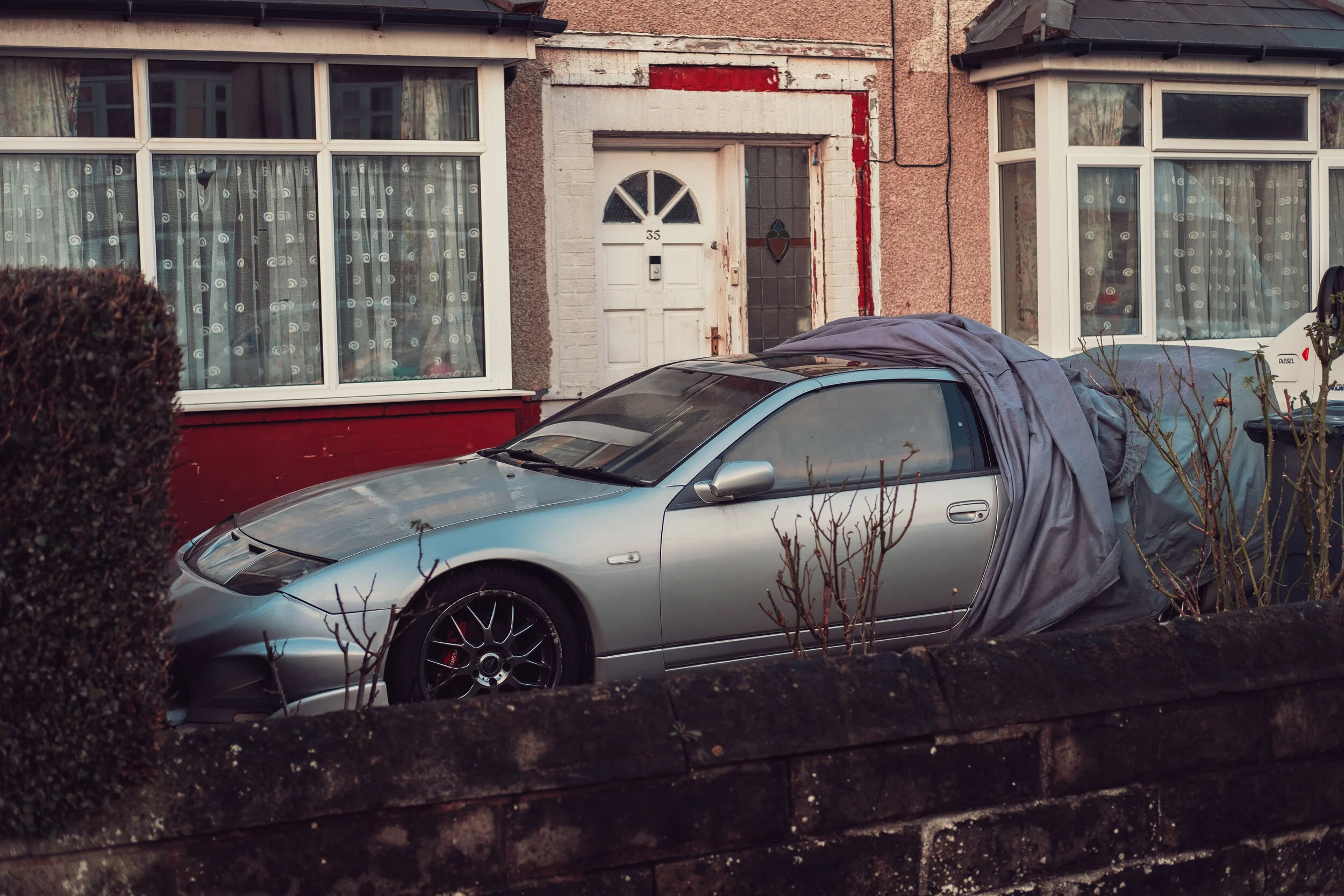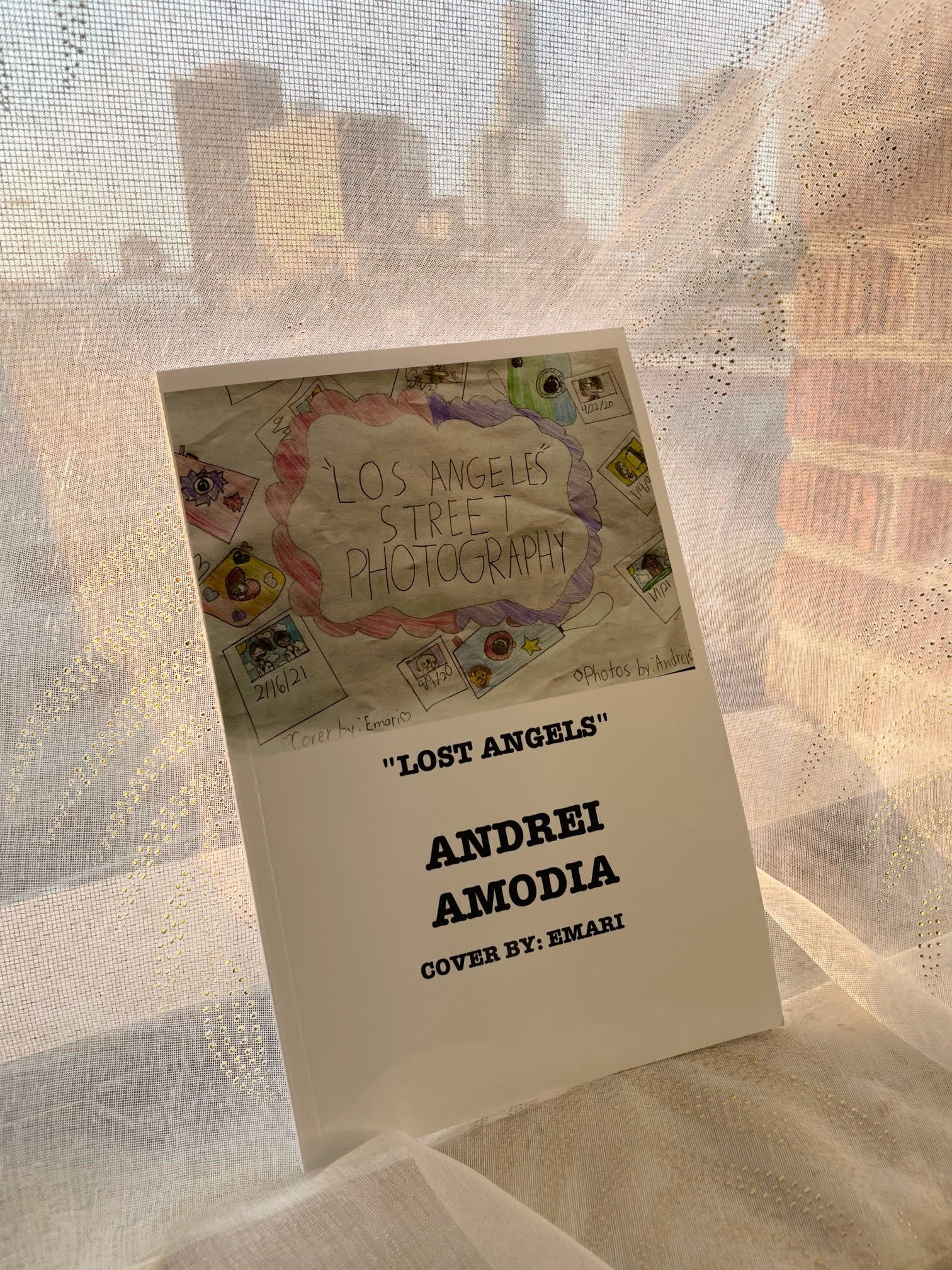Parked: Fraser Havenhand
PC: Fraser Havenhand
Andrew D. McClees (ADM): For those who aren't familiar with you, or your work, can you introduce yourself?
Fraser Havenhand (FH): I'm a photographer based in Sheffield, I have been taking photos since I was at school, I chose photography as an A level and subsequently went on to study a degree in photography at Sheffield Hallam University. Since leaving education I became a photography assistant as a way to get a foot in the commercial world, and now work as a freelance photographer up and down the UK. Alongside studying and working I've always been obsessed with documenting my surroundings, from the last day of school (which i still have on a hard drive somewhere) to when I was assisting and lucky enough to travel, it felt like a great way to keep a diary of all the things I'd seen and places I'd visited. Alongside a passion for photography I've always been drawn to classic cars having owned 5 and helped build and restore countless others with my twin brother and our friends. So naturally as time went by I found myself wanting to try and find a way to combine my two biggest passions, cars and photography.
PC: Fraser Havenhand
ADM: We're talking about your new book Parked - what's your premise for the book, and where does the title come from?
FH: So Parked actually started about 3 years ago although I didn't know it at the time, whenever I was out and about with my camera taking pictures I'd always be on the lookout for cool cars or interesting scenes with Parked or abandoned cars. As we all know Lockdown came to the uk and changed all of our lives, so without access to photographing cars through work and with extra time to take walks I started to notice cars that I once had overlooked. I saw abandoned cars, once left to the mercy of a front garden to rot amongst the trees and grass. I saw long term projects being uncovered and worked on for the first time in years. I saw the prized cars, washed off and taken for a drive in order to keep them well maintained during the long layoff that lockdown brought. As for the title, my girlfriend came up with it, i'm rubbish at thinking of titles for my work and we were sitting talking about the project in the living room, she just looked up and said call it Parked. So naturally the name stuck and here we are.
PC: Fraser Havenhand
ADM: I'm not much of a gear/petrolhead myself, but I've known a few car enthusiasts over the years - to you what's the big draw? and is there a crossover with photography that might exist, but might not be immediately apparent to someone who isn't huge into about cars?
FH: I think for most enthusiasts it starts with the social side, it definitely was for me. When I was 17/18 years old a lot of my friends got into cars and modifying them and because the budgets are always quite low it makes sense to spend the money on an older one. They're also cheaper to maintain (in most cases!) I guess after that I always liked the idea that you can express yourself through driving a classic or modified car, the fact that you can change it and make it individual to you is exciting and makes it something that not everyone has. The last thing is that these cars all have a story, I remember buying a 1992 Volkswagen Jetta and finding a colouring sheet scrunched up under the rear seats with some loose crayons, at some point that car had been used to take the kids to school or for days trip and i think that's really cool that its been used and loved and passed on to the next person for them to enjoy.
PC: Fraser Havenhand
ADM: In terms of general working process - what's a typical shoot like - what're you doing/what're you thinking about?
FH: Because there's always tons to think about on a commercial shoot, from early call times, to lots of kit and working alongside a big team of other creatives, I like to keep my personal work very separate. So my personal and documentary work just involves me, a small fuji camera and one lens. The whole project (and 99%) of my other personal work is shot this way. I think because you can get so caught up in the pragmatic choices that surround photography it's good to strip things back and just be mindful with a camera, and that's what I try to do when I go out on my photowalks. In terms of what I'm doing I usually just go out and pick a cool area of Sheffield that I have not explored yet, find a place to park and start walking. That way whatever you find seems much more exciting.
PC: Fraser Havenhand
ADM: Is this your first Photobook or Zine? If so what got you to make parked? And if not what's been your book/zine making experience this far, and how have you applied it to the new book?
FH: This is my first proper photobook but my second go at self publishing. During Lockdown I made a small A5 zine called Light of the north with a selection of images I had taken since I started assisting about 7 years ago. This experience really pushed me to want to make a photobook. It felt great to sit down and look back at past photos, to try to find little threads that link the images or juxtapositions between two shots. This time though I wanted to make something that had a more cohesive theme and felt like a proper project. So when I noticed back in early lockdown I had a couple of images of Parked cars I really liked, I started getting my head down and looking harder for them when I was out and about. My first zine was designed by me and this time round I really wanted to make the most of the images I had and get a designer involved in the project who had the expertise that I definitely lacked! Luckily I share space with an amazing designer in the studio I rent in Sheffield - Paul Ward of Evergreen Agency - so naturally we worked together on the book to make it what you see today.
PC: Fraser Havenhand
ADM: I find a lot of photography of cars a little boring, it's become kind of a dead meme in analog photography - but what you're doing here is really fascinating and compelling - what is it that you look for in your photographs of cars, and what is it that you're looking at when photographing the cars? - is it largely the same mindset or shot selection that you'd go for in broader photowalks/your personal work?
FH: I think it's more about how the whole scene works together, the car is the focus but it's also equally important how it interacts with its environment. There have been quite a few occasions whilst photographing for Parked that i've seen an amazing cars parked on a drive or on a road, but just because of access or surroundings i've had to leave the shot out, or sometimes just couldn't make it work in the viewfinder so not snapped it all together. I think my mindset stayed the same with Parked as it would have when shooting my broader personal work, and I think that helped to keep a consistent style and overall look to the images even though some are shot 3 years apart. I was always trying to say as much as I could about the car in frame without it becoming cluttered or a mess, is there a broken window that's been taped up, a posh house number behind an abandoned car, a little trinket on dash that helps you imagine what the owner might be like, I always wanted there to be something else in the frame with the car that helped us imagine the life it might've lived up to me discovering it parked up.
PC: Fraser Havenhand
ADM: - That's really awesome, to get to work with a designer - I think a lot of photogs and zinemakers would really benefit from that. Do you have any big takeaways from working with your designer (Paul), and do you think this experience will shape how you approach your next book?
FH: The main thing for me is that you're bringing somebody else's expertise and creativity into the mix and that counts for so much. Especially if they mirror your enthusiasm for the project and can help elevate it beyond what you hoped it might be, like I feel Paul did with my book. I think the biggest takeaway is that you've got someone else taking care of a really critical part of the book making process and that helps you as the photographer focus on things like shot selection and ordering instead of being overwhelmed with the whole project (design, ordering, type, copy, layout etc). I think it will shape how I approach my next book definitely, I always want my work to keep a sense of authenticity but knowing it can be moulded into something more cohesive and be elevated with design, type and copy will make me consider shooting projects that, in the past, I might have found too mundane or quirky.
PC: Fraser Havenhand
ADM: Were there any photobooks you had in mind while assembling this one, or are there any books that you think about a lot while approaching your personal work in general?
FH: Not specifically in terms of the subject matter, although I'm definitely not the first person to make a book on Parked cars so I'm sure there are a lot out there. I was really inspired by the books that Centre Centre makes in London, I was lucky enough to do the photography in one called Magic Papers a while back. The reason being the whole ethos of the publishers is that the books have really unique subject matter but are beautifully made and a joy to flick through, so that inspired me to make a book about something maybe more niche than usual.
PC: Fraser Havenhand
ADM: What have you learned in the process of shooting Parked, is there a big core takeaway you've found?
FH: I think one of the biggest takeaways is being more patient with the process of taking photos. I'm fairly impatient and if I've made an image or a group of images I'm excited about I like to share them and get feedback from my peers or upload them to my commercial portfolio on my website. But with Parked, because initially it wasn't necessarily a project at all, and then when it did turn into an ongoing project I knew I wanted to make a book, I had to keep the images away on my computer and only look at them from time to time. It helped me realise that I could take a step back from my photography and take my time with developing the work and that I didn't have to put pressure on myself to keep churning out shots for Instagram or my portfolio (which sometimes it felt like I was doing).
ADM: From Al Palmer (of Brown Owl Press): What was the biggest single turning point for you as an artist?
PC: Fraser Havenhand
FH: I think to be honest it was when I just started consistently going outside with my little camera and my 40mm lens and just deciding "I'm going to photograph whatever catches my eye today whether it's a rubbish bag on the floor or a shop window that looks interesting" and genuinely sticking to it. I used to over analyse a lot of what I was doing and try to figure out how other people whose work I loved were making magic in their images. I'd get caught up wondering why somebody else's work was amazing and mine wasn't. The best bit of advice I've ever been given is from a photographer I assisted for years in Sheffield and he said to me "You just have to start, take some pictures and see what happens" and even though it sounds so simple I think a lot of people really struggle with just making a start. When I started thinking like that things just seemed to click into place a lot more, I seemed to find a groove and start to carve out a style in my work and because I was enjoying what I was doing, my motivation to shoot as much as I could went through the roof.
ADM: What question do you have for the next photographer?
What keeps you motivated on the days when everything feels more difficult than it should?
ADM: Where can we pick up a copy of the book? Any final thoughts/words/shoutouts?
FH: Firstly i'd like to say thank you for the interview. It's been great to think about the project and be asked some really great questions. I would like to shout out my girlfriend Charlie for helping me keep it real when looking at my work. Also I'd like to shout out David for mentoring me and giving me the confidence to be a photographer, Justin for letting me chew his ear off on the phone about making photo books and how it all works, Phil for all his advice and weekly chats, and to Stefan and Ant for keeping me going in the group chat. The book is available through my website for pre-order, The first 50 copies bought come with a free 10x8 print.

















